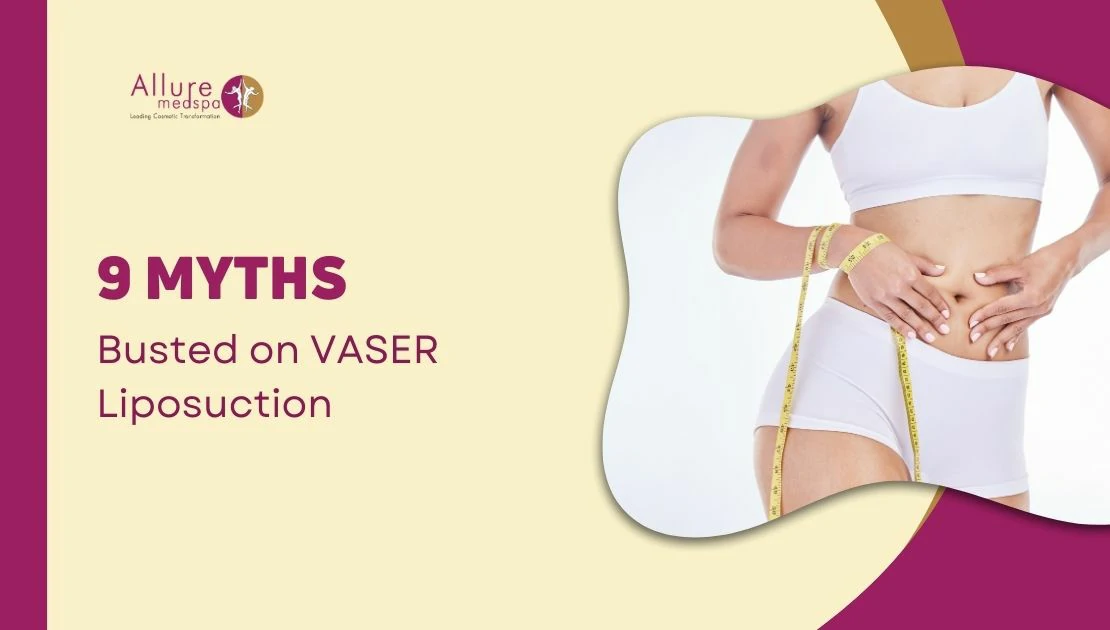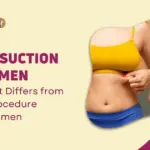VASER Liposuction: 9 Myths Debunked
Table of Contents
- Introduction
- Myth 1: VASER Liposuction Is Dangerous
- Myth 2: The Procedure Is Painful
- Myth 3: Recovery Takes a Long Time
- Myth 4: VASER Liposuction Is Expensive
- Myth 5: It’s a Weight-Loss Solution
- Myth 6: There’s Only One Type of Liposuction
- Myth 7: It’s Only for Women
- Myth 8: Older Adults Can’t Have It
- Myth 9: It Eliminates Cellulite
- Conclusion
- Frequently Asked Questions (FAQs)
Introduction
VASER liposuction is a modern, ultrasound-assisted fat-removal technique. It’s precise and tissue-selective, but misconceptions can make it hard to understand who it’s for and what it can achieve. Below, we separate myth from fact so you can make an informed decision with your surgeon.
Myth 1: VASER Liposuction Is Dangerous
Fact: When performed by a board-certified plastic surgeon in an accredited facility, VASER lipo is considered safe. Ultrasound energy helps loosen fat while minimising trauma to nerves, vessels, and connective tissue, which can support smoother recovery.
Myth 2: The Procedure Is Painful
Fact: VASER is typically done under local anaesthesia with sedation or general anaesthesia. Most people report mild soreness—more like post-workout tenderness—rather than severe pain. Your surgeon will tailor pain control and aftercare.
Myth 3: Recovery Takes a Long Time
Fact: Downtime is usually shorter than with traditional liposuction. Many patients return to desk work within a few days. You’ll avoid strenuous exercise for a couple of weeks, wear a compression garment as directed, and follow staged activity increases.
Myth 4: VASER Liposuction Is Expensive
Fact: Costs vary by areas treated, operative time, and surgeon expertise. While fees can be higher than basic suction-assisted lipo, the precision, potential for better contouring, and reduced downtime make it a value-driven option for many.
Myth 5: It’s a Weight-Loss Solution
Fact: VASER is a body-contouring procedure, not a weight-loss method. It’s best for people near their goal weight who want to address resistant fat pockets and refine shape. Stable lifestyle habits help maintain results.
Myth 6: There’s Only One Type of Liposuction
Fact: Multiple techniques exist (suction-assisted, power-assisted, laser-assisted, water-assisted, VASER/ultrasound-assisted). Each has pros and cons. VASER’s ultrasound helps emulsify fat for targeted sculpting with less tissue trauma.
Myth 7: It’s Only for Women
Fact: VASER works for all genders. Men frequently treat the abdomen, flanks, and chest (including gynecomastia cases) for more chiselled definition.
Myth 8: Older Adults Can’t Have It
Fact: Age alone isn’t a barrier. Suitability depends on overall health, medications, expectations, and skin quality. Your surgeon will review your history and may suggest adjuncts (e.g., skin-tightening options) if laxity is present.
Myth 9: It Eliminates Cellulite
Fact: VASER removes fat but doesn’t directly treat the fibrous septae responsible for cellulite. It can improve contour, but dedicated cellulite treatments (e.g., radiofrequency, laser, subcision) may be needed for dimpling.
Conclusion
Understanding what VASER liposuction can—and cannot—do helps set realistic expectations. If you’re close to your ideal weight and want targeted sculpting, a consultation with a board-certified plastic surgeon can determine whether VASER is the right approach, or if another technique (or combination) would better meet your goals.
Frequently Asked Questions (FAQs)
Q1. What areas can VASER liposuction treat?
Common areas include abdomen, flanks, thighs, arms, chin/neck, back, and chest. Treatment is tailored to your anatomy and goals.
Q2. How long do the results last?
Removed fat cells don’t return, but remaining fat cells can enlarge with weight gain. Maintain a stable weight and active lifestyle to preserve results.
Q3. Are there risks?
Potential risks include bruising, swelling, contour irregularities, temporary numbness, infection, seroma, and anaesthesia-related risks. Choosing an experienced surgeon and following aftercare reduces complications.
Q4. When will I see results?
Initial changes are visible within days to weeks. Swelling gradually subsides over 6–12 weeks, with final refinement typically at 3–6 months.
Q5. Can VASER be combined with other procedures?
Yes. It’s often paired with tummy tuck, fat transfer (e.g., to buttocks or face), or skin-tightening technologies to enhance overall contour.
Liposuction Surgery Before After Results
Wondering How Liposuction Can Transform You?
Liposuction Surgery Patient Testimonials: Fine To Fabulous Journeys
Awarded by Google.com
Rating: 4.7
Reviews: 485+
Awarded by WhatClinic.com
Rating: 4.8
Reviews: 119+
Awarded by Realself
Rating: 4.9
Reviews:453+
Awarded by Facebook
Rating: 4.6
Reviews:105+
Dr Milan Doshi and his staff are very professional and committed as the centre is highly equipped with advanced technology. I had closed rhinoplasty 4 months back and I’m seeing the results as to how it becomes successful.
Deepika Shetty
The doctor explained everything clearly and the surgery was smooth. Recovery was faster than I expected and the team was very supportive.
Rahul Mehta
Very natural results and excellent staff. From consultation to follow-up, the experience was outstanding and boosted my confidence.
Sneha Kapoor
Inspired by Their Transformation
Video: Liposuction Surgery Explain By Dr. Milan Doshi
Dr Milan Doshi is describing the Liposuction Surgery in detail with benefits, candidacy, associated risks and significance
Understood the Process?






















